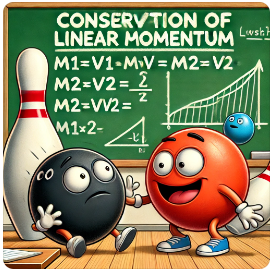Score Higher on AP Biology 2024: Tips for FRQ 4 – Conceptual Analysis


Table of Contents
ToggleIntroduction
Preparing for the AP Biology exam requires not only a strong grasp of biological concepts but also the ability to apply this knowledge effectively under exam conditions. One of the key components of the AP Biology Free Response Questions (FRQs) is FRQ 4 – Conceptual Analysis. Scoring well on this FRQ can significantly boost your overall exam performance, contributing up to 6% of your total exam score.
In this comprehensive guide, we will delve into effective strategies, detailed tips, and practice techniques to help you master FRQ 4 – Conceptual Analysis. Whether you aim for a higher score or simply wish to enhance your understanding, this guide provides the tools you need to succeed.
Table of Contents
- Overview of FRQ 4 – Conceptual Analysis
- General Advice for FRQ 4
- Detailed Tips for Earning Each Point
- Sample FRQ Analysis
- How Can I Practice and Improve?
- Additional Tips for Success
- Conclusion
- References
Overview of FRQ 4 – Conceptual Analysis
FRQ 4 – Conceptual Analysis is a short free response question designed to assess your ability to understand and analyze biological phenomena through a conceptual lens. Typically, you are presented with a scenario involving a biological system experiencing a disruption and are asked to:
- Describe the biological processes involved.
- Explain these processes in detail.
- Predict the causes or effects of the disruption.
- Justify your predictions with scientific reasoning.
Key Characteristics:
- Duration: Approximately 12 minutes.
- Exam Weight: 6% of your total AP Biology exam score.
- Scoring: Based on a 4-point rubric, with each point addressing a specific aspect of your response.
Understanding how to navigate each component effectively can significantly enhance your performance on this FRQ.
General Advice for FRQ 4
Mindset
- Stay Calm: Maintaining composure allows for clearer thinking and better organization of your thoughts.
- Confidence: Trust in your preparation and knowledge of biological concepts.
Strategy
- Time Management: Allocate about 12 minutes to this FRQ. Divide your time equally among the four parts to ensure a balanced and thorough response.
- Structure: Follow a clear and logical structure—start with a brief description, move to explanations, make predictions, and conclude with justifications.
Structure
- Introduction (Optional): A brief statement introducing the biological phenomenon.
- Body:
- Describe: Outline the biological processes involved.
- Explain: Provide a detailed explanation of these processes.
- Predict: Forecast the potential causes or effects of the disruption.
- Justify: Support your predictions with scientific evidence and reasoning.
- Conclusion (Optional): Summarize your analysis or restate key points.
Time Management
- Initial 2 minutes: Read the question carefully, identify key terms, and brainstorm relevant concepts.
- Next 8 minutes: Write your response, ensuring each part is addressed clearly.
- Final 2 minutes: Review your answer, checking for completeness and accuracy.
Additional High-Level Tips
- Relevance: Ensure every part of your response directly addresses the question.
- Clarity: Use precise scientific language and avoid unnecessary jargon.
- Connections: Link concepts within the question to broader biological principles.
Detailed Tips for Earning Each Point
1. Describe Biological Concepts, Processes, or Models
Precision is Key:
- Be Specific: Clearly define the biological concepts or processes involved in the scenario. For example, if the scenario involves photosynthesis disruption, describe the light-dependent and light-independent reactions.
- Detailed Steps: Break down processes into their component steps or stages. For instance, in cellular respiration, outline glycolysis, the Krebs cycle, and the electron transport chain.
- Molecular/Organellar Involvement: Mention specific molecules, enzymes, or organelles that play a role. For example, in mitosis, reference spindle fibers and centromeres.
Visual Aids:
- Sketch Diagrams: If appropriate, include simple diagrams to illustrate complex processes. This can demonstrate your understanding and help clarify your descriptions.
- Label Key Parts: Ensure any diagrams are accurately labeled to reflect the processes being described.
Example:
Scenario: A plant experiences a reduction in sunlight.
Description: Photosynthesis in plants involves two main stages: the light-dependent reactions and the Calvin cycle. In the light-dependent reactions, chlorophyll absorbs sunlight, converting it into chemical energy in the form of ATP and NADPH. These energy carriers then power the Calvin cycle, where carbon dioxide is fixed into glucose.
2. Explain Biological Concepts, Processes, or Models
Interconnectivity:
- Relate Steps to Outcomes: Explain how each step of a process contributes to the overall function. For instance, describe how the production of ATP in the light-dependent reactions fuels the Calvin cycle.
- Cause and Effect: Illustrate how changes in one part of a process affect other parts. For example, explain how a deficiency in chlorophyll impairs the light-dependent reactions, reducing ATP and NADPH production.
Use Analogies:
- Simplify Complex Concepts: Use analogies to make intricate processes more relatable. For example, likening the electron transport chain to a series of dominoes falling to illustrate energy transfer.
- Ensure Accuracy: While analogies are helpful, ensure they accurately represent the biological concepts without introducing misconceptions.
Example:
Explanation: The reduction in sunlight decreases the efficiency of the light-dependent reactions, leading to lower ATP and NADPH production. Consequently, the Calvin cycle cannot proceed effectively, resulting in reduced glucose synthesis and overall plant growth.
3. Predict Effects of a Change in a Biological System
Cause-and-Effect Relationships:
- Immediate and Long-Term Effects: Consider both immediate consequences and long-term impacts. For example, a decrease in photosynthesis may immediately reduce glucose levels and later impair growth and reproduction.
- Adaptations: Think about potential adaptations the organism or system might undergo in response to the disruption. For instance, the plant might allocate resources to shade tolerance mechanisms.
Contextual Knowledge:
- Link to Larger Concepts: Relate your predictions to broader biological themes such as energy flow, homeostasis, or evolutionary pressures.
- Biological Principles: Apply principles like the law of conservation of energy or the principle of competitive exclusion in your predictions.
Example:
Prediction: With reduced sunlight, the plant will experience decreased glucose production, leading to slower growth rates. Over time, this may result in smaller leaves and reduced reproductive capacity.
4. Justify Predictions
Scientific Evidence:
- Reference Biological Laws and Principles: Support your predictions with established scientific concepts. For example, use the principles of photosynthesis to justify the predicted decrease in glucose production.
- Empirical Data: If applicable, reference studies or data that support your reasoning.
Logical Reasoning:
- Step-by-Step Justification: Clearly outline how the biological processes lead to your predicted outcomes.
- Address Counterarguments: Consider and refute potential alternative explanations or outcomes, strengthening your justification.
Example:
Justification: According to the light-dependent reactions of photosynthesis, sunlight is essential for ATP and NADPH production. Without adequate sunlight, the efficiency of these reactions declines, directly reducing the energy available for the Calvin cycle. This decrease in glucose synthesis limits the plant’s energy resources, inhibiting growth and reproductive processes.
Sample FRQ Analysis
Practice Question
Context:
Prior to their high school football games, the students of a high school in Texas would choose a fellow classmate to address the crowd through a loudspeaker. This address almost always involved a prayer—students were not required to attend, but many of those present were students. This prayer was described by many as “overtly Christian.” Several students and their parents sued the school board, stating that the practice violated the Constitution. In the resulting case, Santa Fe Independent School District v. Doe, in a 6-3 decision, the Supreme Court held that the policy that allowed for student-led prayer over the loudspeakers at a football game violated the Constitution because it was occurring “on government property at government-sponsored school events.”
FRQ:
- Identify the constitutional clause that is common in both Engel v. Vitale and Santa Fe Independent School District v. Doe.
- Explain how the facts in both Engel v. Vitale and Santa Fe Independent School District v. Doe led to a similar decision in both cases.
- Describe an action that could be taken by legislators who disagree with the ruling in Santa Fe Independent School District v. Doe.
Model Answer
1. Identify the constitutional clause that is common in both Engel v. Vitale and Santa Fe Independent School District v. Doe.
Answer:
Both Engel v. Vitale and Santa Fe Independent School District v. Doe involve the Establishment Clause of the First Amendment, which prohibits the government from making any law “respecting an establishment of religion.”
Explanation:
- Engel v. Vitale (1962): The Supreme Court ruled that school-sponsored prayer in public schools violates the Establishment Clause.
- Santa Fe Independent School District v. Doe (2000): The Court held that student-led prayer at football games also breaches the Establishment Clause.
2. Explain how the facts in both Engel v. Vitale and Santa Fe Independent School District v. Doe led to a similar decision in both cases.
Answer:
In both Engel v. Vitale and Santa Fe Independent School District v. Doe, the presence of organized prayer in public schools was deemed unconstitutional because it constituted government endorsement of a particular religion.
- Engel v. Vitale: The practice of reciting a state-composed prayer during school hours represented official government participation in religious activities.
- Santa Fe Independent School District v. Doe: Allowing student-led prayers at football games implied governmental support for religious activities, thereby violating the Establishment Clause.
Explanation:
Both cases involved government-sanctioned religious activities within public educational institutions. The Supreme Court determined that such practices infringed upon the constitutional separation of church and state, as mandated by the Establishment Clause.
3. Describe an action that could be taken by legislators who disagree with the ruling in Santa Fe Independent School District v. Doe.
Answer:
Legislators who disagree with the ruling in Santa Fe Independent School District v. Doe could propose a constitutional amendment to redefine the boundaries of the Establishment Clause, thereby allowing school-sponsored religious activities.
Explanation:
By amending the Constitution, legislators can seek to override Supreme Court decisions that interpret the Establishment Clause in a way that restricts religious activities in public schools. This would require approval by two-thirds of both houses of Congress and ratification by three-fourths of the state legislatures, reflecting the high level of consensus needed to alter constitutional provisions.
How Can I Practice and Improve?
Start Early
Begin your preparation 16 weeks before the AP exam—typically around the beginning of the second semester. Early preparation allows ample time to master the required Supreme Court cases and develop effective comparison skills.
Weekly Focus
Each week, concentrate on one Supreme Court case. Take detailed notes, including:
- Year of Decision
- Court’s Decision
- Rationale Behind the Decision
- Constitutional Principles Involved
- Related Cases
Tools: Use index cards, Quizlet, or other flashcard tools to memorize key facts and concepts.
Regular Review
Consistently review your notes to reinforce your understanding. Regular revision helps in retaining information and making connections between different cases.
Create Practice FRQs
Develop your own FRQs by comparing a required case with a non-required one. Practice writing responses to enhance your ability to identify similarities and differences effectively.
Example:
Compare Brown v. Board of Education with Regents of the University of California v. Bakke to analyze how each case addresses racial discrimination in education.
Understand Key Terms
Familiarize yourself with the differences between terms like “identify,” “describe,” and “explain.” Ensure you address each part of the question accurately to secure all possible points.
Tip: Review past exam questions and practice differentiating these terms in your responses.
Timed Practice
Simulate exam conditions by timing your responses to practice questions. This helps in managing your time efficiently and ensures you can complete all parts of the FRQ within the allotted time.
Additional Tips for Success
Deep Dive into Cases
- Comprehensive Understanding: Don’t just memorize the cases—understand the underlying principles and how they interact with other aspects of government and society.
- Impact Analysis: Analyze how each decision impacts legislative processes, civil rights, and public policies.
Engage with Study Groups
- Peer Discussions: Discussing cases with peers can enhance your understanding and reveal different perspectives.
- Teaching Others: Teaching your classmates or even friends can reinforce your own knowledge and uncover any gaps in understanding.
Utilize Multiple Resources
- Textbooks: Provide comprehensive explanations and analyses of Supreme Court cases.
- Online Platforms: Websites like Khan Academy, CrashCourse, and the College Board offer valuable insights and practice materials.
- Flashcards: Create digital or physical flashcards for quick review sessions.
Seek Feedback
- Practice Responses: Write practice FRQs and seek feedback from teachers or knowledgeable peers.
- Constructive Criticism: Use the feedback to identify areas for improvement and refine your writing skills.
Stay Updated
While focusing on the 15 required cases, stay informed about recent Supreme Court decisions that may reflect similar principles or extend your understanding of constitutional law.
Conclusion
Mastering the SCOTUS Application FRQ is essential for achieving a high score on the AP U.S. Government and Politics exam. By thoroughly understanding the required Supreme Court cases, practicing comparisons with non-required cases, and adhering to the scoring criteria, you can effectively demonstrate your ability to analyze and apply constitutional principles. Consistent study, strategic practice, and a thorough understanding of key concepts will equip you to tackle the SCOTUS Comparison FRQ with confidence and precision, ultimately enhancing your overall exam performance.
Embrace the challenge, utilize the strategies outlined in this guide, and approach your preparation with dedication and focus. Your efforts will not only help you achieve a high score but also deepen your appreciation for the intricate balance of power and the enduring impact of Supreme Court decisions on American governance and society.
References
- The College Board. Course and Exam Description for AP U.S. Government and Politics. Link
- Engel v. Vitale, 370 U.S. 421 (1962).
- Santa Fe Independent School District v. Doe, 530 U.S. 290 (2000).
- Brown v. Board of Education, 347 U.S. 483 (1954).
- Marbury v. Madison, 5 U.S. (1 Cranch) 137 (1803).
- McCulloch v. Maryland, 17 U.S. (4 Wheat.) 316 (1819).
- Schenck v. United States, 249 U.S. 47 (1919).
- Baker v. Carr, 369 U.S. 186 (1962).
- Gideon v. Wainwright, 372 U.S. 335 (1963).
- Tinker v. Des Moines Independent Community School District, 393 U.S. 503 (1969).
- New York Times Co. v. United States, 403 U.S. 713 (1971).
- Wisconsin v. Yoder, 406 U.S. 205 (1972).
- Roe v. Wade, 410 U.S. 113 (1973).
- Shaw v. Reno, 509 U.S. 630 (1993).
- United States v. Lopez, 514 U.S. 549 (1995).
- McDonald v. Chicago, 561 U.S. 742 (2010).
- Citizens United v. Federal Election Commission (FEC), 558 U.S. 310 (2010).
- AP U.S. Government and Politics Teacher’s Guide. Link
- U.S. Supreme Court. Website
- Levi, P. (2019). The Supreme Court and American Politics: A Brief History. CQ Press.
- Bindman, D. (2017). The Supreme Court: A Very Short Introduction. Oxford University Press.
- Greenhouse, L., & Raskin, A. (2016). The Supreme Court: The Personalities and Rivalries that Defined America. Doubleday.
- Irons, P. (2018). A People’s History of the Supreme Court: The Men and Women Whose Cases Have Shaped Our Constitution. Viking.
- Scholarly Articles and Case Summaries from reputable law journals and educational websites.
Recent Posts
- The Periodic Table
- PAST PAPERS
- Unit 10 Overview: Mechanical Waves and Sound
- 9.4 Kirchhoff’s Junction Rule and Ohm’s Law (Resistors in Series and Parallel)
- 9.3 Ohm’s Law and Kirchhoff’s Loop Rule (Resistors in Series and Parallel)
- 9.2 Resistivity
- 9.1 Definition of a Circuit
- Top Public Universities in America
- Best Liberal Arts Colleges in America
- Top 25 Community Colleges in America
- University of Chicago
- Claremont McKenna College
- University of Michigan – Ann Arbor
- Johns Hopkins University
- Cornell University
Choose Topic
- ACT (15)
- AP (20)
- AP Art and Design (5)
- AP Physics 1 (1)
- AQA (5)
- Banking and Finance (1)
- Biology (13)
- Business Ideas (68)
- Calculator (67)
- Chemistry (3)
- Colleges Rankings (30)
- Computer Science (4)
- Conversion Tools (135)
- Cosmetic Procedures (50)
- Cryptocurrency (49)
- Edexcel (4)
- English (1)
- Environmental Science (2)
- Exam Updates (1)
- Finance (17)
- Fitness & Wellness (164)
- Free Learning Resources (187)
- GCSE (1)
- Health (107)
- History and Social Sciences (20)
- IB (1)
- IGCSE (2)
- Image Converters (3)
- IMF (10)
- Math (39)
- Mental Health (58)
- OCR (3)
- Past Papers (463)
- Physics (5)
- SAT (36)
- Sciences (1)
- Short Notes (5)
- Study Guides (26)
- Syllabus (19)
- Tutoring (1)
Recent Comments



Score Higher on AP Biology 2024: Tips for FRQ 4 – Conceptual Analysis


5.4 Conservation of Linear Momentum






